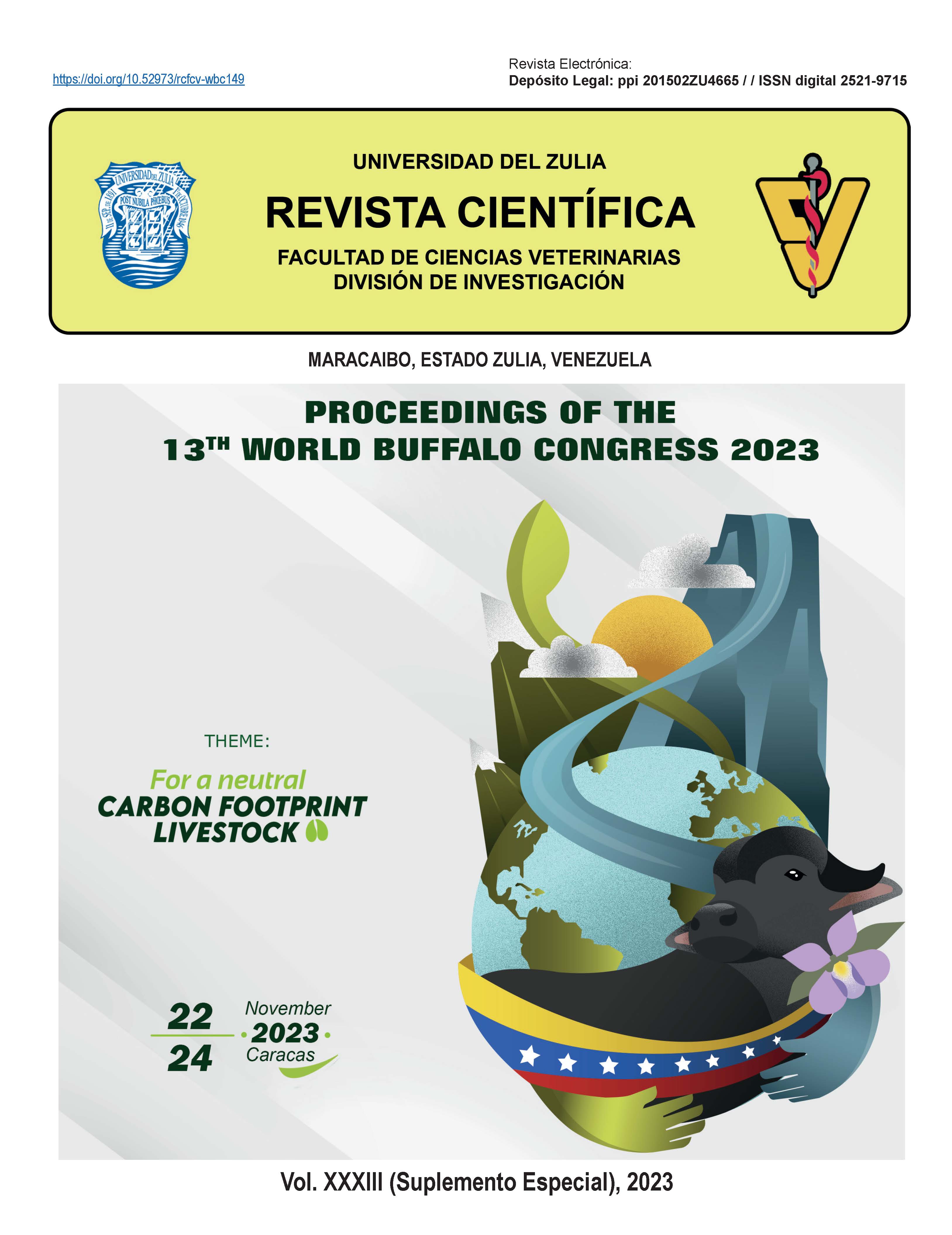Work performance, physiological and hemato-biochemical responses in working buffalo with different load weights
Abstract
The objective of the present study was to evaluate the effect of the weight of different loads on work performance and physiological, biochemical, and hematological responses in working buffaloes. The study was carried out in the province of Esmeraldas, Cantón Quinindé, Ecuador. During the study, the area maintained an average temperature of 24.4 °C and a humidity of 91.7%. Twelve male working buffaloes 7 to 10 years old (782.16±21.62 kg) were evaluated while transporting African oil palm fruits in metal baskets placed on the back. The weights of the loads were 200, 300, and 500 kg. The work was carried out from 7:00 to 15:00 h. Buffaloes had five years of previous experience performing the same activities in the production unit. The animals always had access to water and natural shade from the African palm. Different variables related to work performance, physiological indicators, and biochemical and hematological responses were recorded 30 minutes before the start of work, immediately after work, and in the morning on the rest day, except for work performance variables, since it was measured immediately after work. All variables were compared with a mixed model for repeated measures, considering the factors time and load weight and Time x Load weight interactions as fixed effects, with the animal in each group as a random effect. The Tukey test with a probability level set at p<0.05 was used to make multiple comparisons. Results indicated that buffaloes that transported loads of 500, followed by 350 and 200 kg moved slower (3.40, 3.45, 3.52 km/h, p=0.0164), worked less time (2.39, 2.55, 2.79 h; p<0.0001), traveled less distance (7.29, 8.71, 9.75 km, p<0.0001) and made fewer trips (8.27, 10.94, 16.61, p<0.0001), respectively. However, the total weight of the load was greater (4,138.88, 3,830.55, 3,322.22 kg, p=0.0281), and they were stopped longer (5.59, 5.44, 5.20 h, p<0.0001), respectively. Physiological (respiratory rate, pulse, heart rate, and rectal temperature) and biochemical (glucose, lactate dehydrogenase, creatine kinase, and total protein) parameters, as well as blood cell count (white blood cell, neutrophils, lymphocytes, monocytes, eosinophils, and basophils), increased after work regardless of weight load (p<0.001). In contrast, red blood cell counts, hemoglobin, and hematocrit were decreased after work (p<0.001). Likewise, these changes were more pronounced when the load was 500 kg compared to 200 kg (p<0.05). However, all changes remained within the physiological ranges reported for the buffaloes. Therefore, it is concluded that heavier loads increase work efficiency but generate greater physiological and metabolic demand. Further studies are needed to understand the long-term effects on the welfare of working buffaloes destined for rural activities.
















